Learning Stories
The educators and children embark on a shared learning journey as they co-construct experiences, meaning and learning about the world around them through inquiry.
Inquiry Question: “How might we discover and influence in our environment through the ways we engage with it?”
Key Concept: Discovery, Change, Cause and Effect
Lines of Inquiry:
- What changes do we notice in our environment, and how do they happen?
- What happens when we interact with our environment? How do our actions create changes in the environment?
- How can we care for and influence our environment positively?
Observing the Weather and Environmental Changes
We began by immersing the children in daily outdoor observations and explorations, inviting them to notice how weather changes the environment. Through their senses – seeing, feeling, hearing and smelling – they began toform deeper connections with their surroundings and observed how the environment transforms with and is shaped by different weather conditions.

On sunny days, they felt the warmth of the sun, noticing how it cast shadows and altered the light, creating bright and dark spaces in their environment.

When the rain came, the children’s excitement grew as they listened to the sounds of the raindrops, watching raindrops hit the ground and forming puddles, before jumping into them. The sensory experience extended as they listened to the rhythmic sound of the rain, observing how it changed the smell of the air and the texture of the ground beneath them.
Through these experiences, the learners develop an awareness of how weather shapes their environment, fostering curiosity and a deepened sense of connection to the natural world. Their reflections and discoveries will continue to inform our ongoing inquiry into the relationship between weather, sensory experiences, and the environment.
Exploring Water and Its Movement
As we observed weather’s impact on the environment, we were drawn to water as a powerful agent of transformation.
Our inquiry deepened as the children explored water’s movement. They observed how it flows down slopes, creating spontaneous ‘water pathways’, and watching how it may influence the movement of other natural materials (such as leaves, flowers and sticks). They were captivated by how water adapts, moves, and sounds—whether in streams, fountains, waterfalls, or puddles.
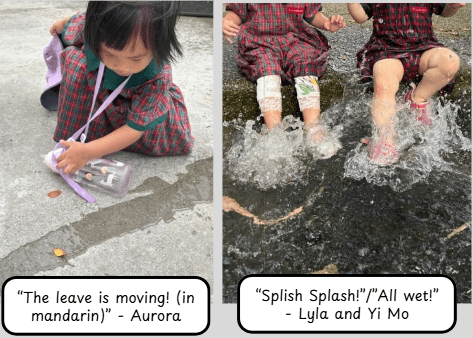
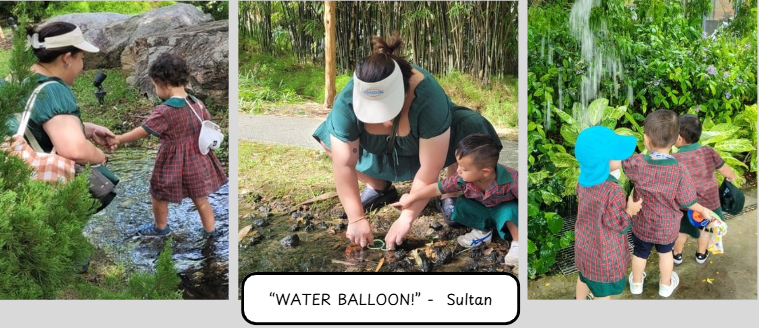
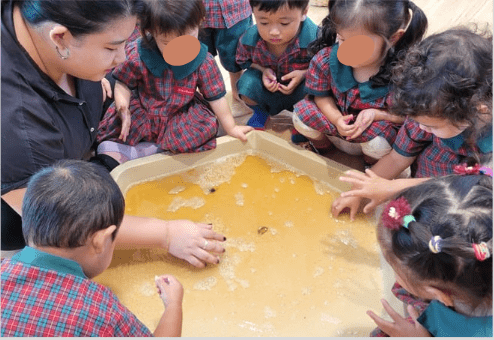
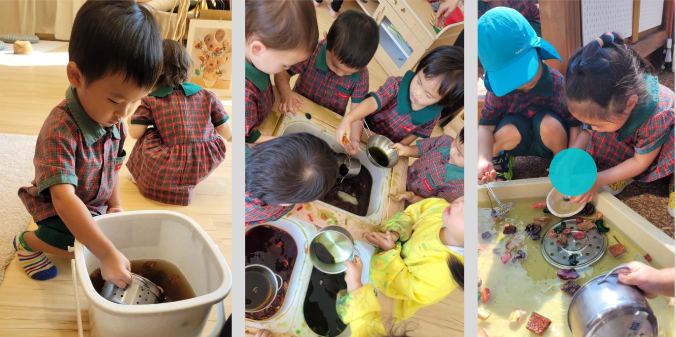
The exploration went further as the children discovered water’s ability to blend with nature and materials. They experimented with extracting colors and fragrances from flowers and leaves, and observing how colours move in water from dyed pasta (i.e. movement of the dye in water). Through such experiments, they experienced water’s role not only in movement but in holding and carrying the essence of the world around them.
These moments of discovery showed them how water connects and transforms everything it touches.
Exploring Soil: Part 1 – Its Textures
We then turned our attention to soil, a familiar material found around our school and Gardens. Using our hands and various tools, the Explorers explored both dry and wet soil, observing closely how the addition of water changed its texture, consistency, and opened up new possibilities for mark-making and creative expression.
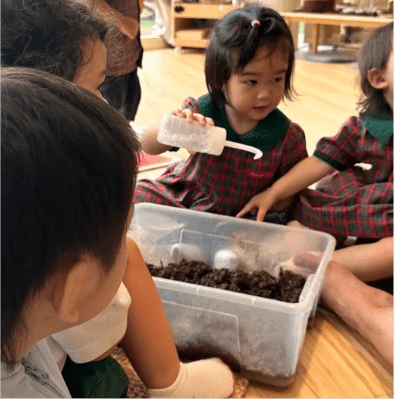
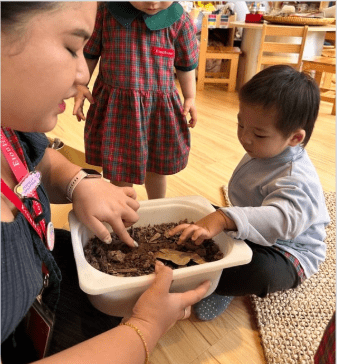
The children were encouraged to use their senses to explore:
Smell: “What does the soil smell like when it’s dry? And when it’s wet? Is there a difference?”
Touch: They compared the sensations of dry and wet soil, feeling the smoothness or roughness, and how the soil responded to their touch.
Sound: The children listened carefully to the sounds the soil made—how did the dry soil sound when they sifted it through their fingers? What about the wet soil?
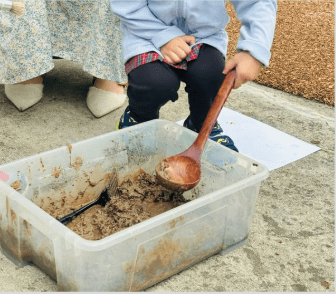
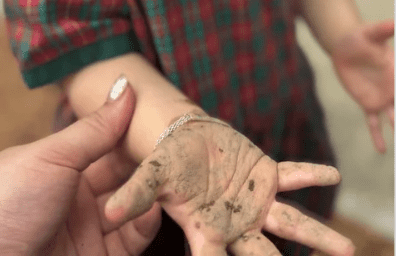
Eva: It’s Squishy! Squelch! Like Brown Bear (referring to the story, “We are going on a Bear Hunt”
Fenix: “Yucky! Dirty!” *as the wet soil or mud stayed on his hands*
Exploring Soil: Part 2 – Mark Making with Soil
The exploration naturally evolved into mark-making experiences. The children used the dry soil like a crayon, discovering the different lines and textures it left behind. As they added water, they watched the soil transform—suddenly, it was no longer dry, but wet and pliable, leading to new forms of expression. Mud balls were created, squeezed, rolled, and splattered onto surfaces, leaving behind marks that captured the richness of their encounter with this earthy material.
Dry soil mark making
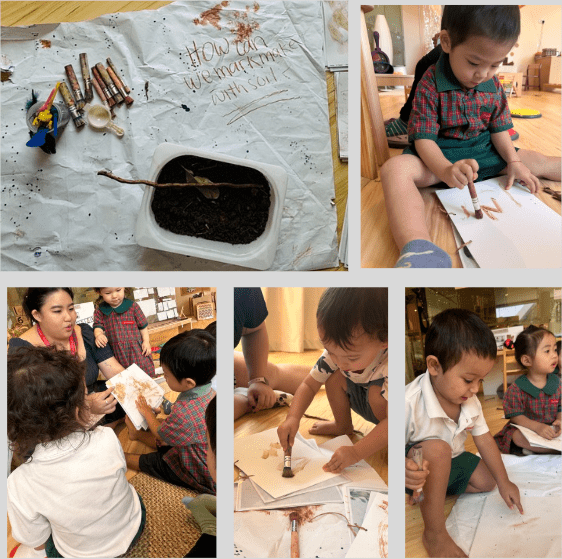
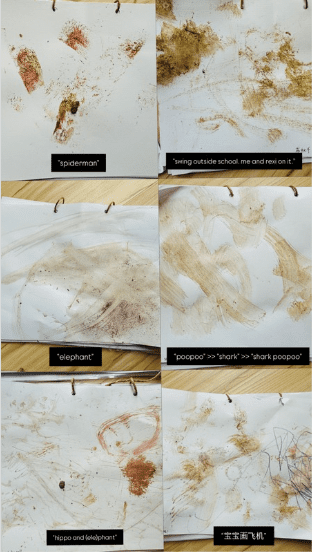
Wet soil (or Mud) mark making
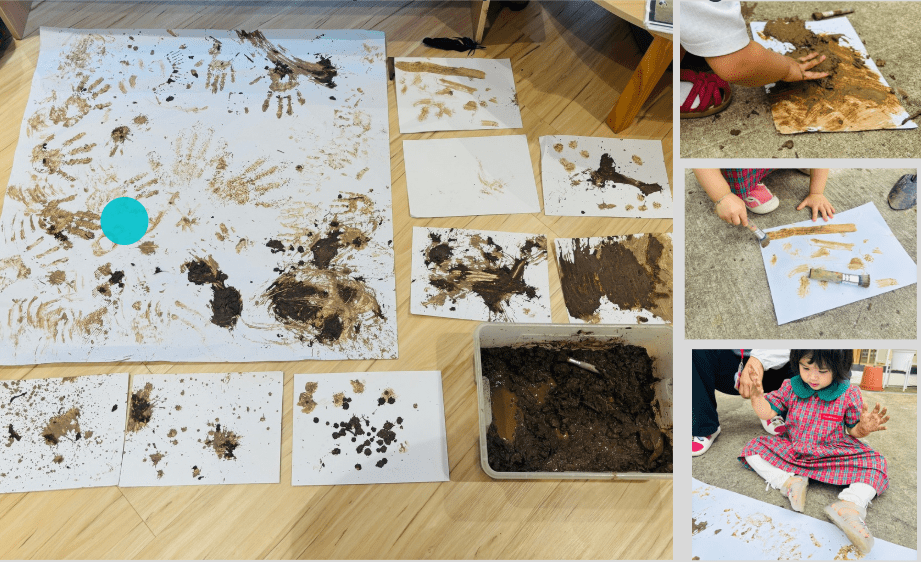
These experiences not only deepened their understanding of soil but also invited them to express their discoveries through their hands and senses, highlighting the many ways in which nature becomes a language of expression.
Connecting with Nature through Mark-Making: Nature Journalling
As we continue our journey of discovery, the Explorers have begun translating their discoveries into mark-making, creating their own nature journals. Using both conventional tools—crayons, markers, and watercolour paint—and more unconventional, natural materials like wet and dry soil. they documented their experience. Each mark told the story of their exploration, turning observation and experimentation into a meaningful, visual record of their journey with nature.
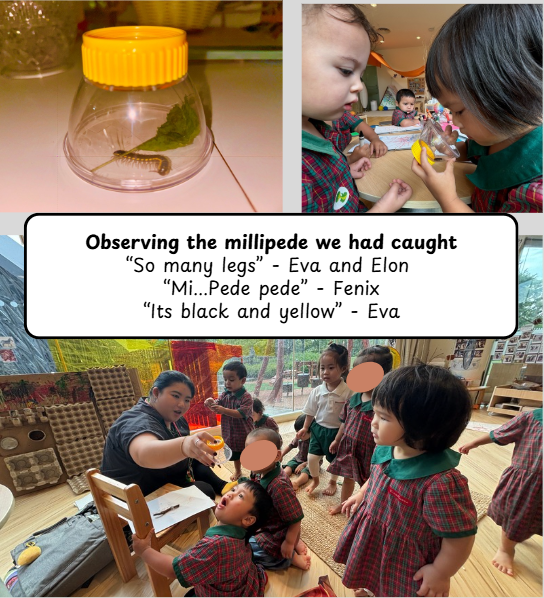
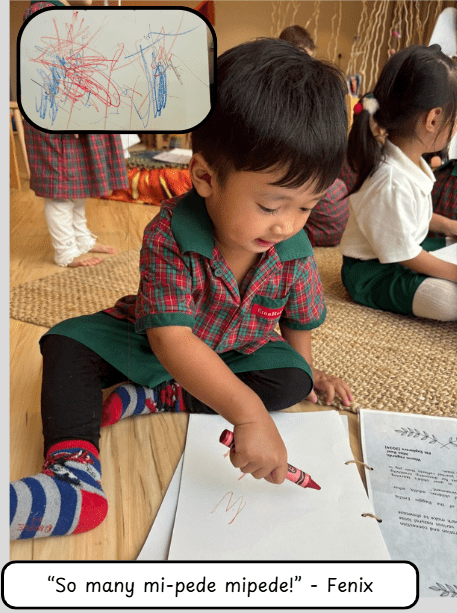
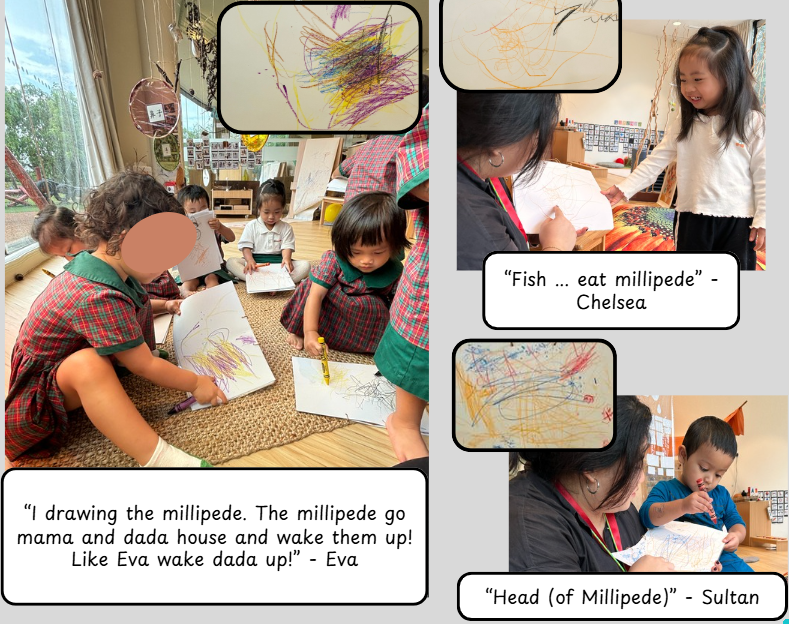
In Term 3, the enduring theme focused on “Relationships and Belonging” as we explored the inquiry question: “How does being in a community influence our beliefs and values?”. This theme aligns with one of our three pillars of education, Community as we discussed how the culture of a community reflects people’s beliefs and values. The lines of inquiry were divided into three key areas: understanding the beliefs and values within communities, examining how our beliefs and values shape our identity and exploring the diverse cultures that exist within communities.
Week 1- Week 2: Gathering the children’s prior knowledge about communities
We kick start the inquiry by gathering the children’s prior knowledge about communities and what the community looks like to them.
They said: “A community is people, places, friends, school, family, construction workers, Gardens by the Bay, our class and Singapore!”

We also further discussed the importance of communities and why they play such a huge role in our lives. Through discussion, the children said:
To help people! -Ryan
Communities help us to live. -Jonathan
In case of emergency, they help us when we get hurt and when we get into trouble. – Jasper
The police help save us from bad guys. -Grace
The trees in our community gives us oxygen and we need oxygen to breathe. -Hazira
The police catch bad guys so that they don’t catch other children. -Emma
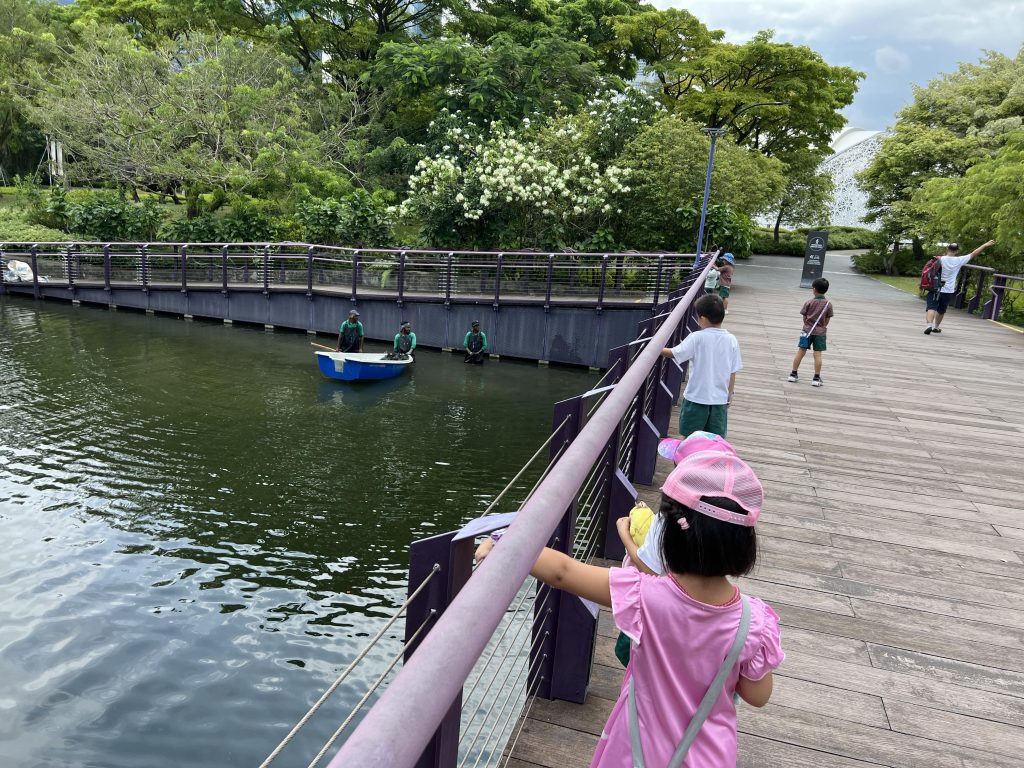
During our outdoor walk, the children also came across some workers in the water and they were curious about what they were doing. The children then approached them and asked them what they were doing. The workers replied that they were clearing up the algae in the water to ensure that the water remains clean.
These workers are part of our community and they help to keep the waters clean, we should say thank you to them – Jasper
The children excitedly waved and said: “Thank you for keeping the water clean!”.
Week 3 – 4: We did a sketch for our community model and the children made their own 3D community model
As we continued to discuss about our community, the children said they wanted to build and create a community. During circle time, we came together as a class and talked about what places or buildings were there in our community. The children came together and drew a blueprint of how their community would look like. The children drew places in their community such as Marina Bay Sands, EtonHouse Garden School by the Bay, police station, fire station, The Singapore Flyer and Gardens by the Bay.
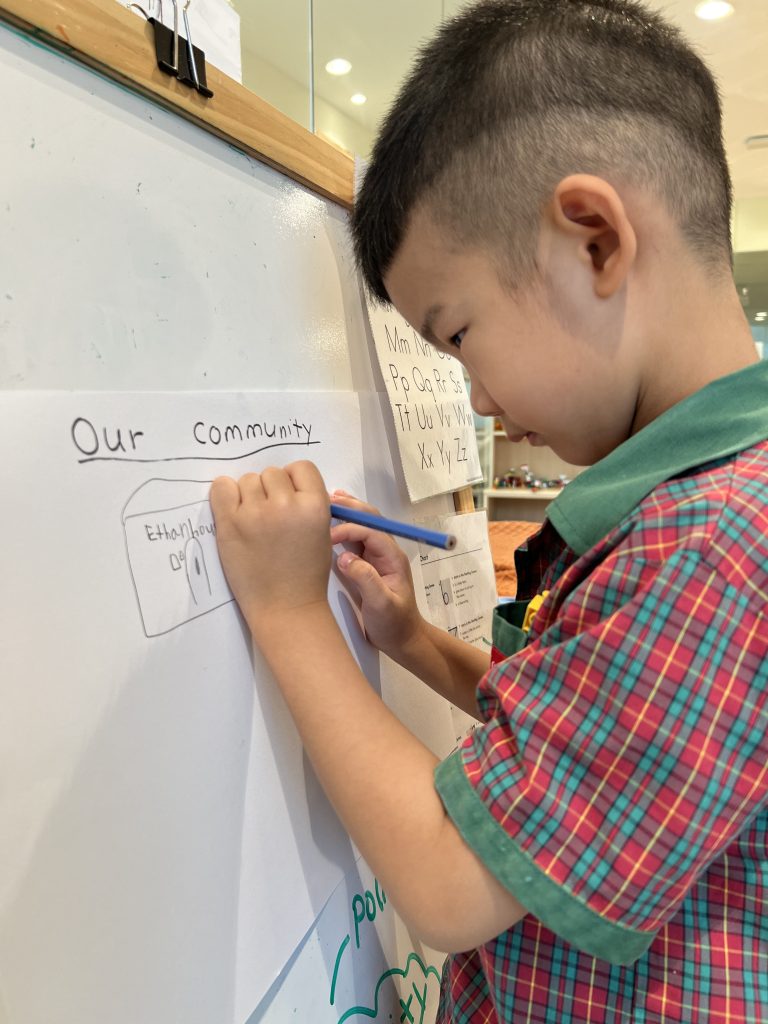
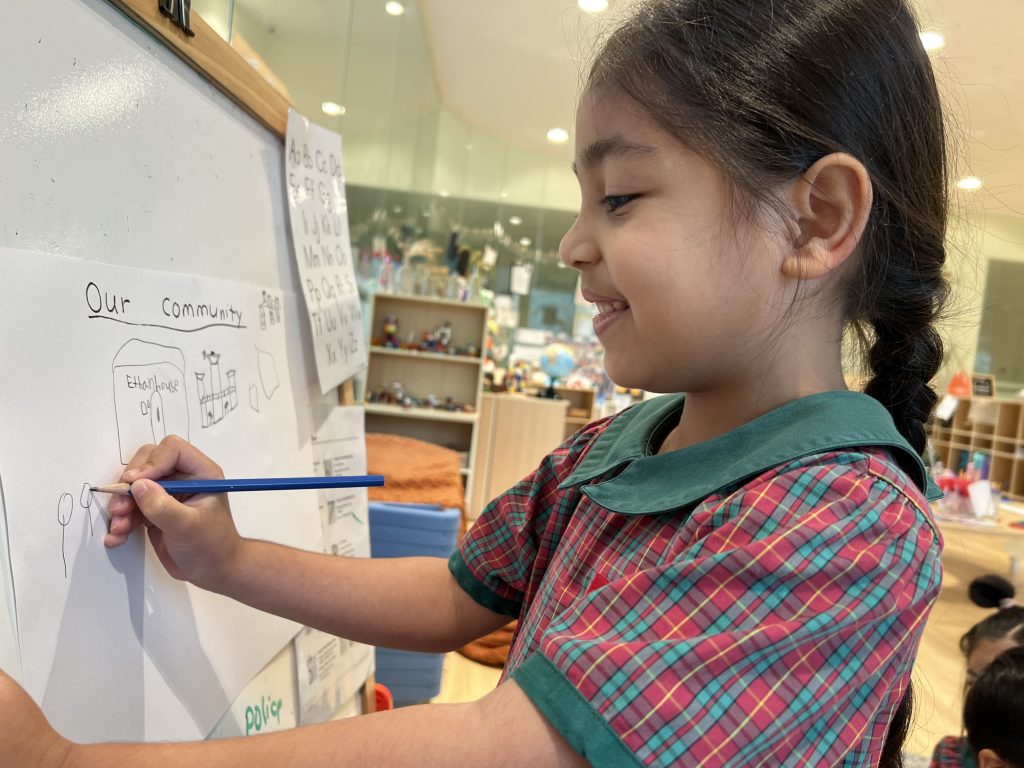
After sketching out the blueprint, I asked the children how are we going to make the buildings and what materials we needed. They said: “We can use recyclable materials from our gardenia!”
For the subsequent 2 weeks, the children started to work on their community 3D model by choosing what building they were going to create and gathered the materials which they needed.
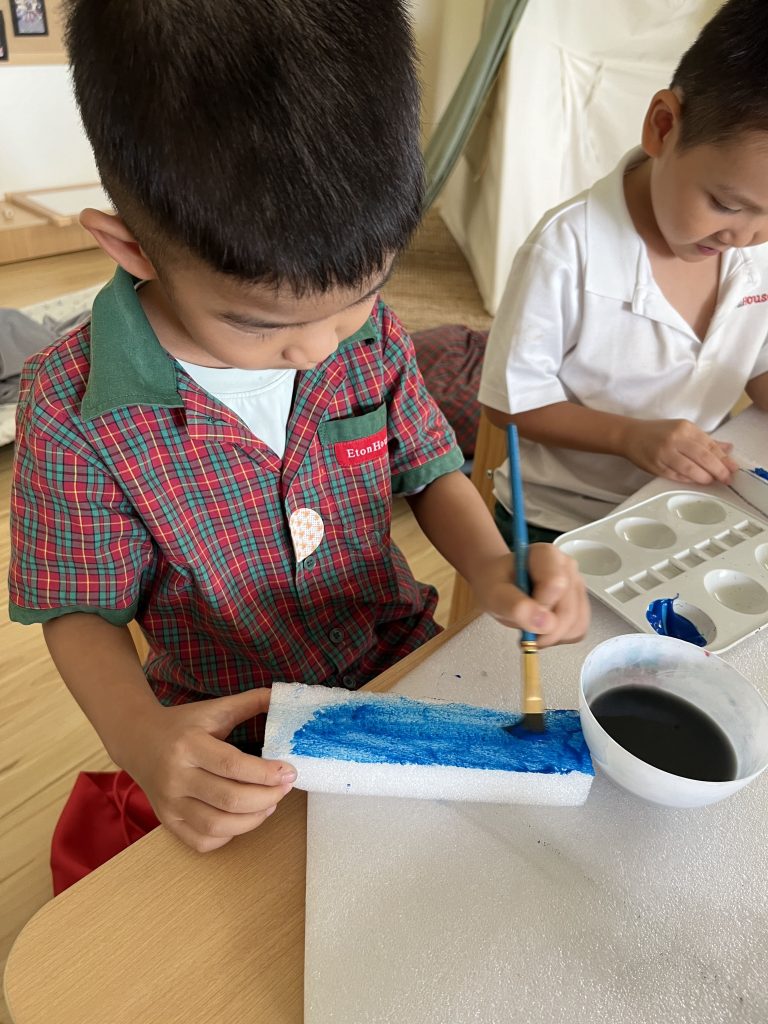
I’m making Marina Bay Sands using styrofoam. -Jasper
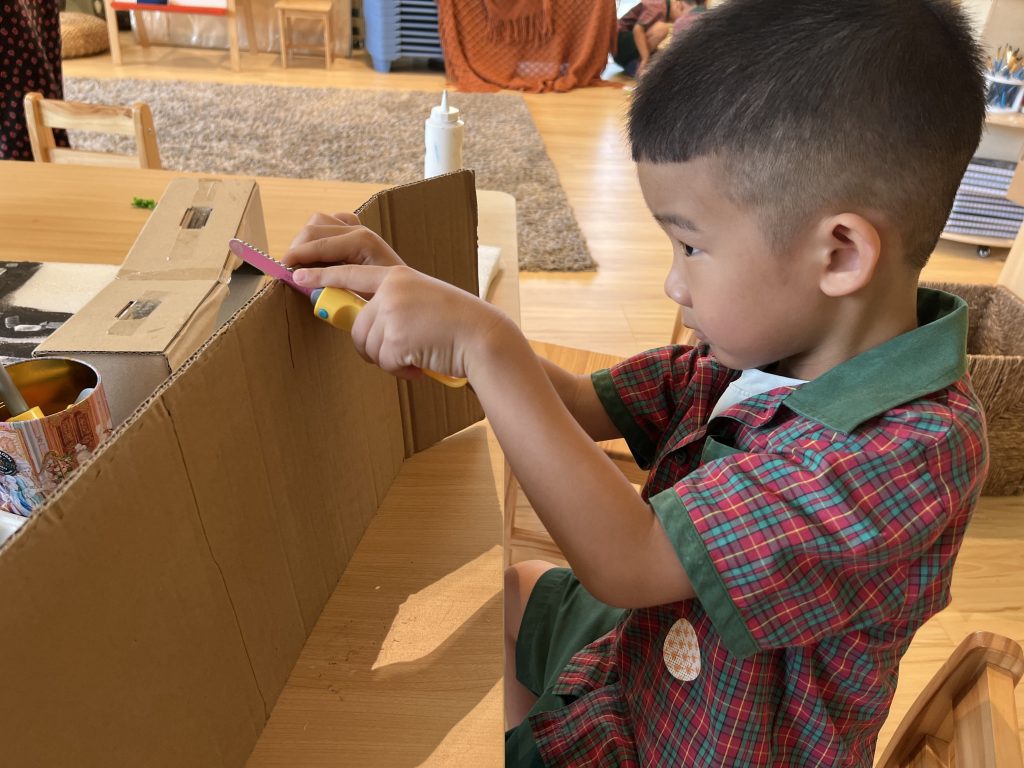
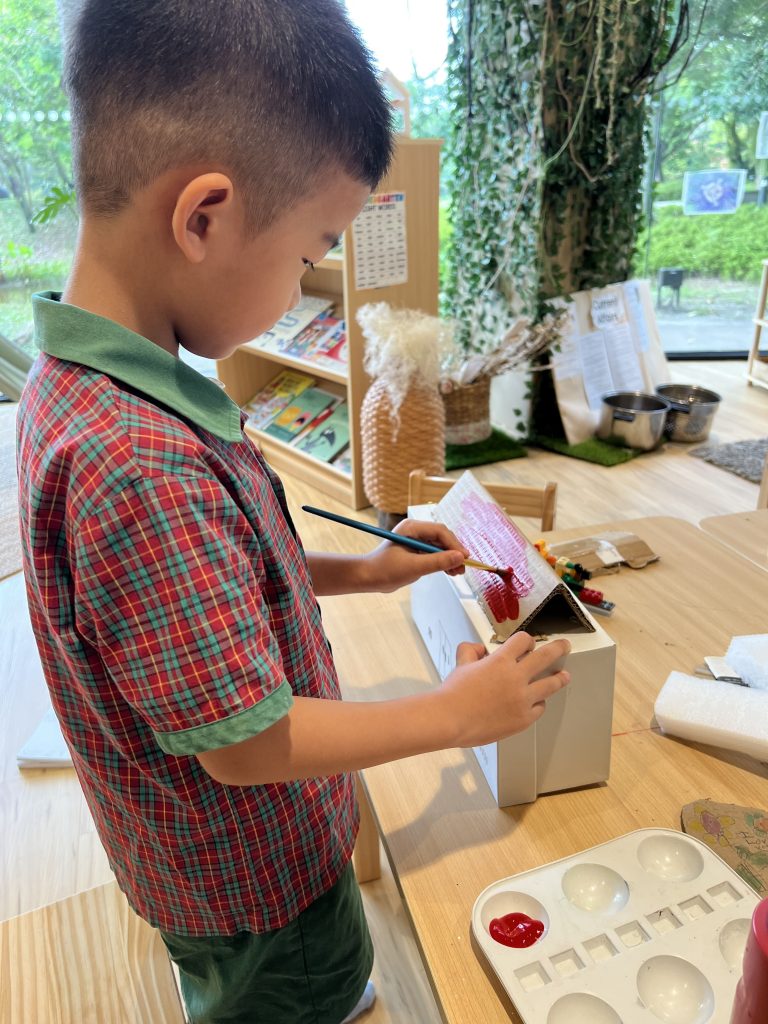
Jasper making EtonHouse using cardboard.
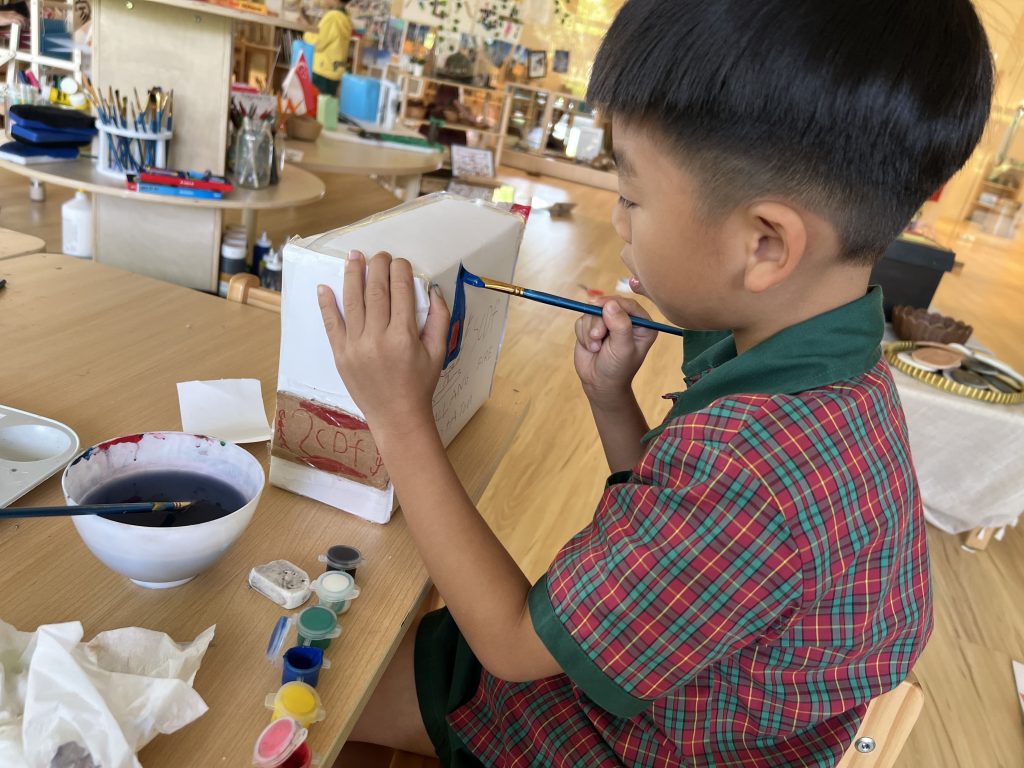
Ryan making the SCDF Kallang Fire Station using cardboard box.
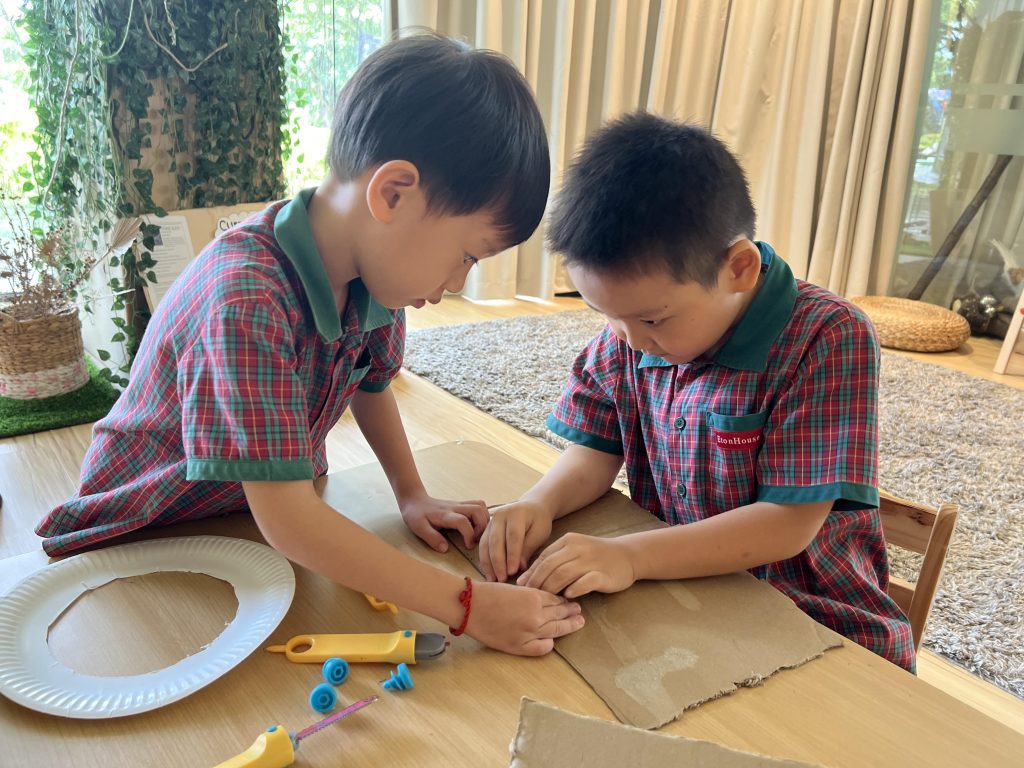
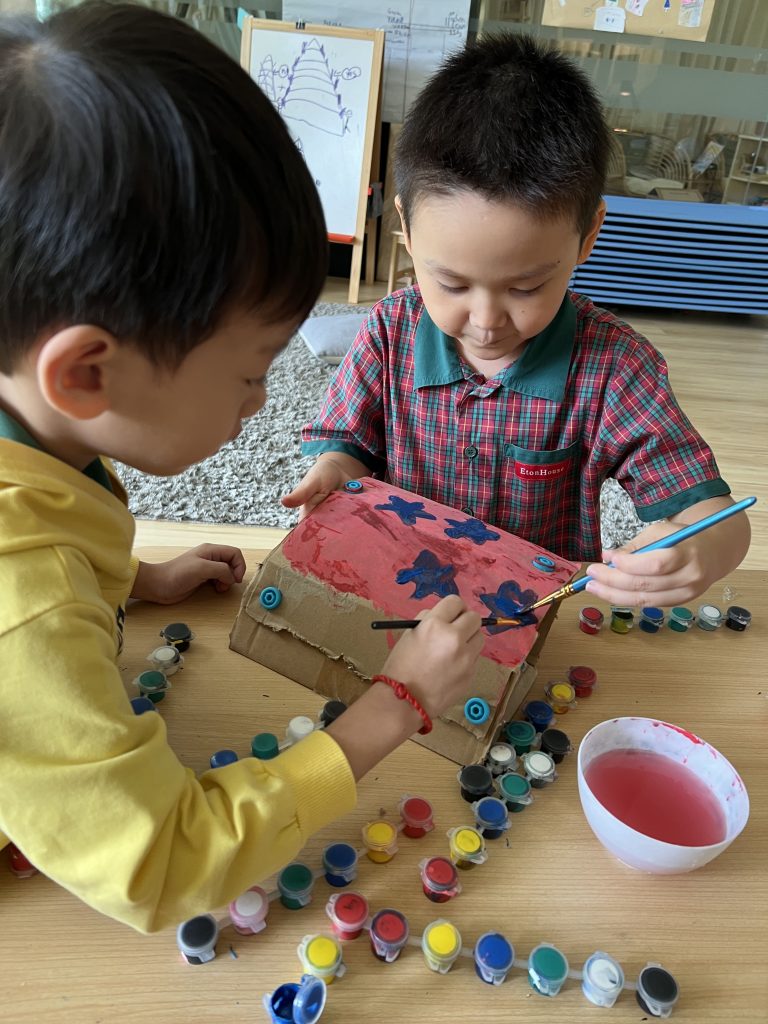
Yi Xing and Jonathan using the safe saw and tinkering tools to build the Singapore Flyer using cardboard.
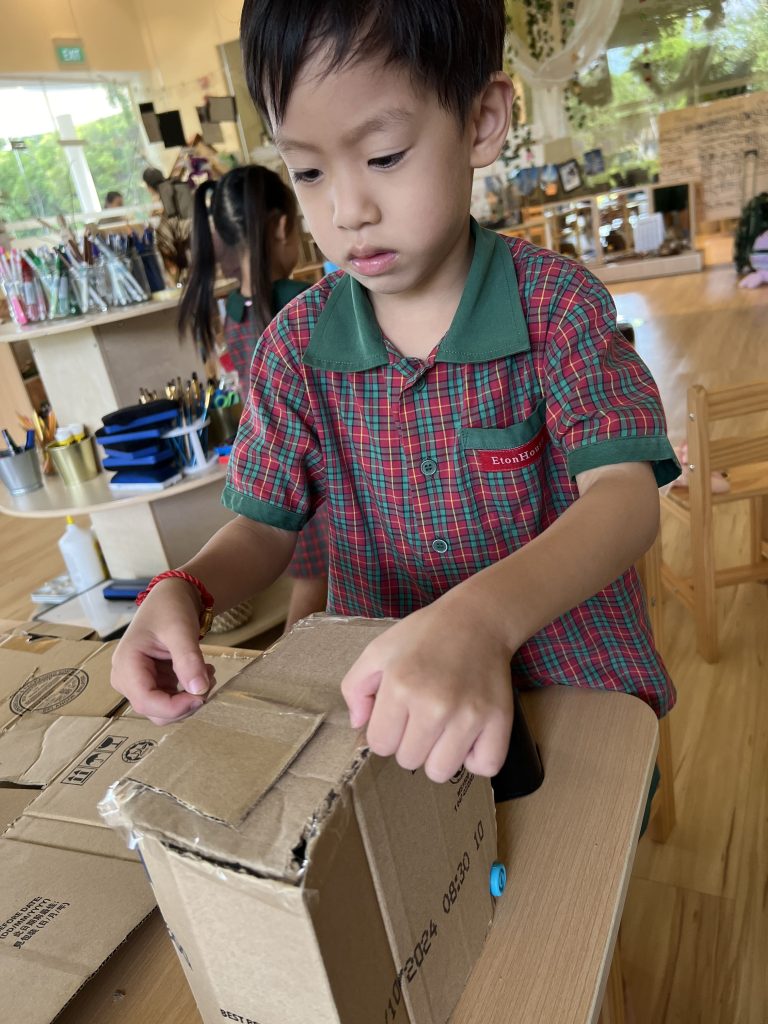
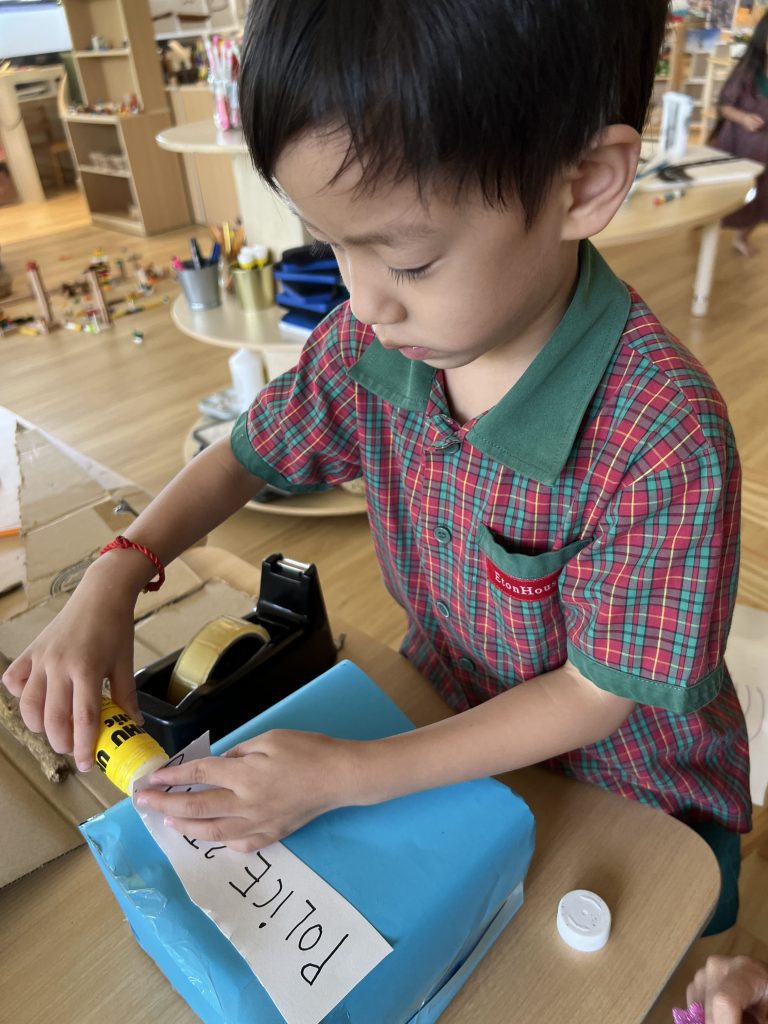
Jonathan creating the police station using the tinkering tools and cardboard.
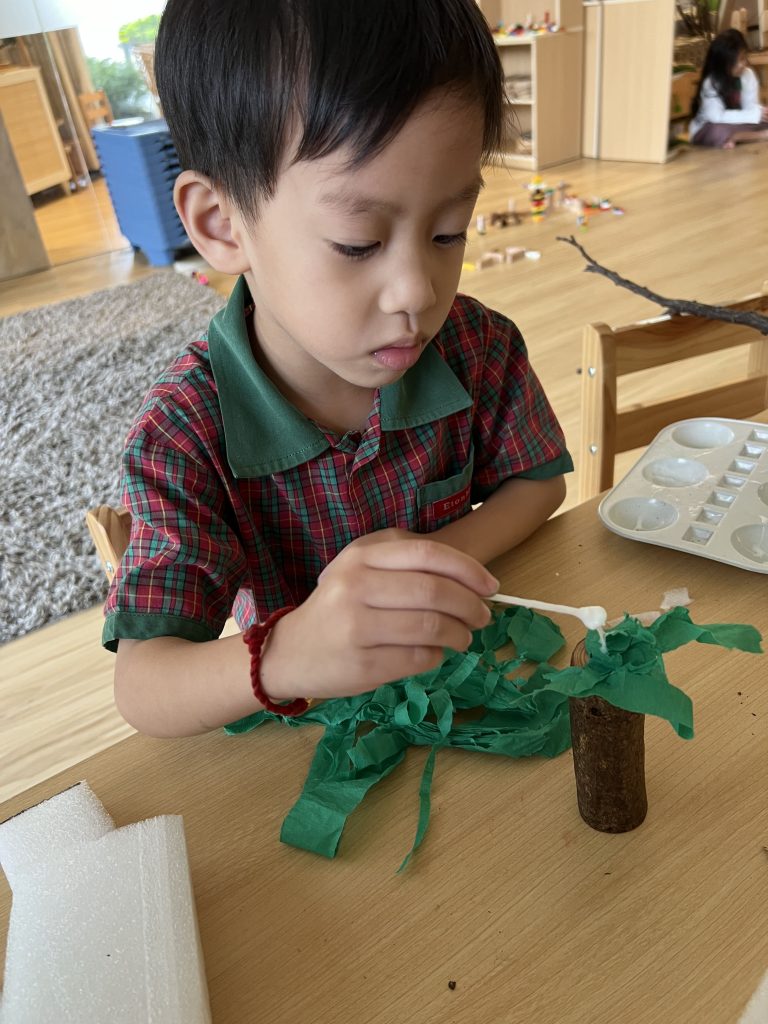
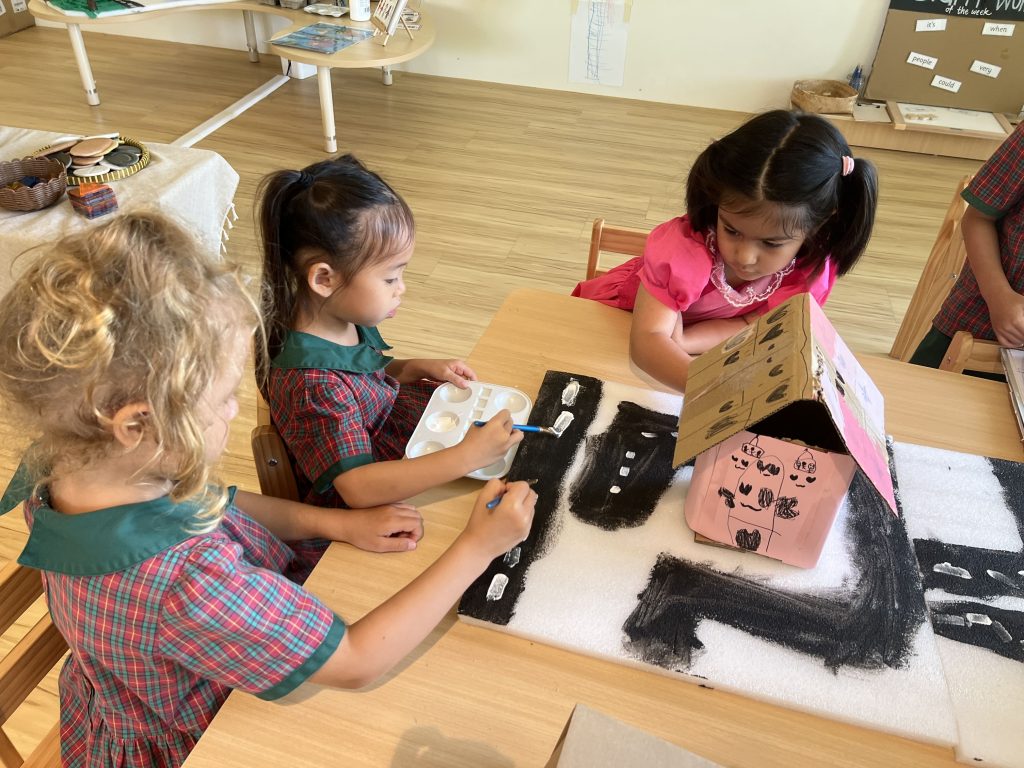
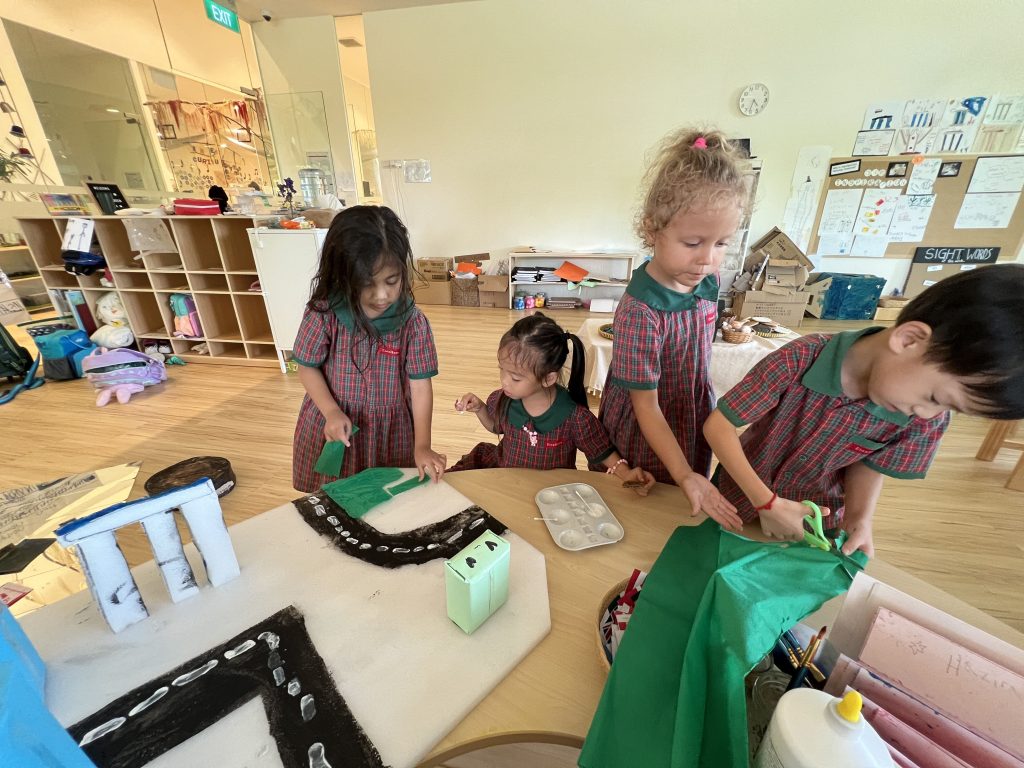
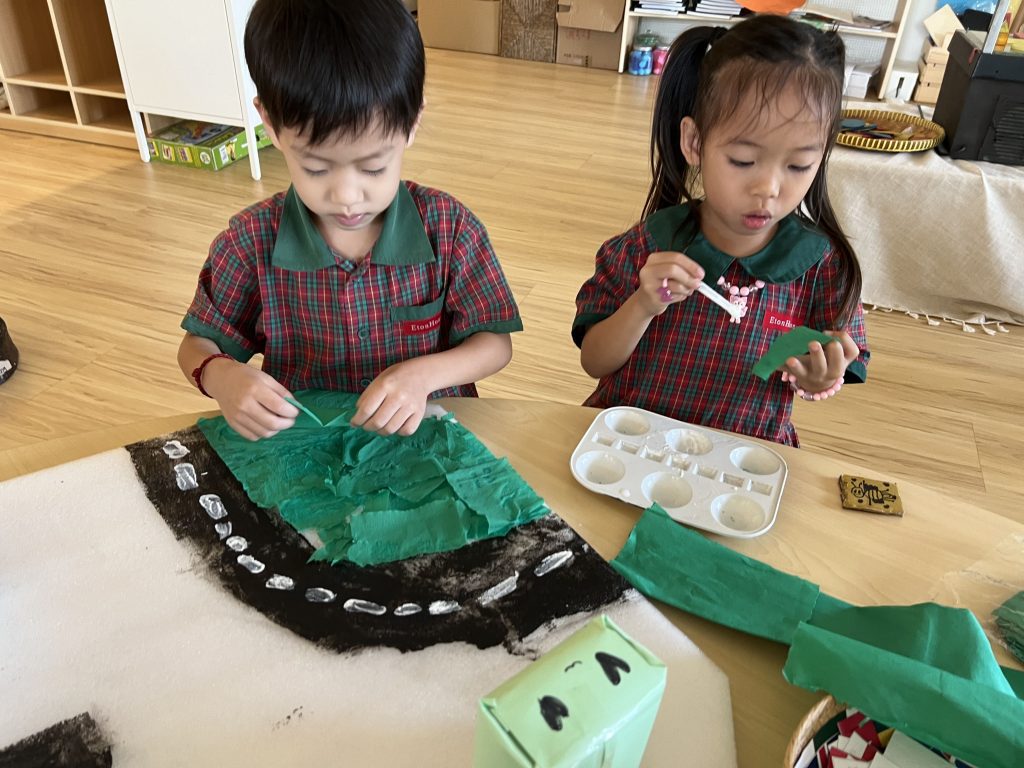
Week 5: How we can show care and concern to our community
After the children were completed with their 3D community model, we had a discussion about how we can show care and concern to our community. We also read the story “Have you filled a bucket today?” and shared about how they can fill the buckets of those in our community.
We can give to our community. -Grace
Sharing is caring. -Emma
When someone is sad or hurt, you need to help. – Jasper
Offer help to someone in need. -Jonathan
Help others to open the door. -Olivia
We can like buy things for them. -Evan
We can give food to them. -Jasper
We can write thank you letters for them. -Hazira
During our discussions, the children shared thoughtful ideas on how to show care and concern for our community, ultimately deciding to create a care package and write letters of appreciation.
Throughout the week, each child reflected on someone special they wanted to thank and wrote heartfelt letters to express their gratitude. Some chose to write to our principal, teachers, Uncle Lim, our maintenance officer, Aunty Leong, who prepares the school lunch, Aunty Xie and Aunty Liu, who help keep the school clean, our admin staff, and even the workers at Gardens by the Bay. Through their handwritten letters, the children beautifully expressed their appreciation for these individuals.
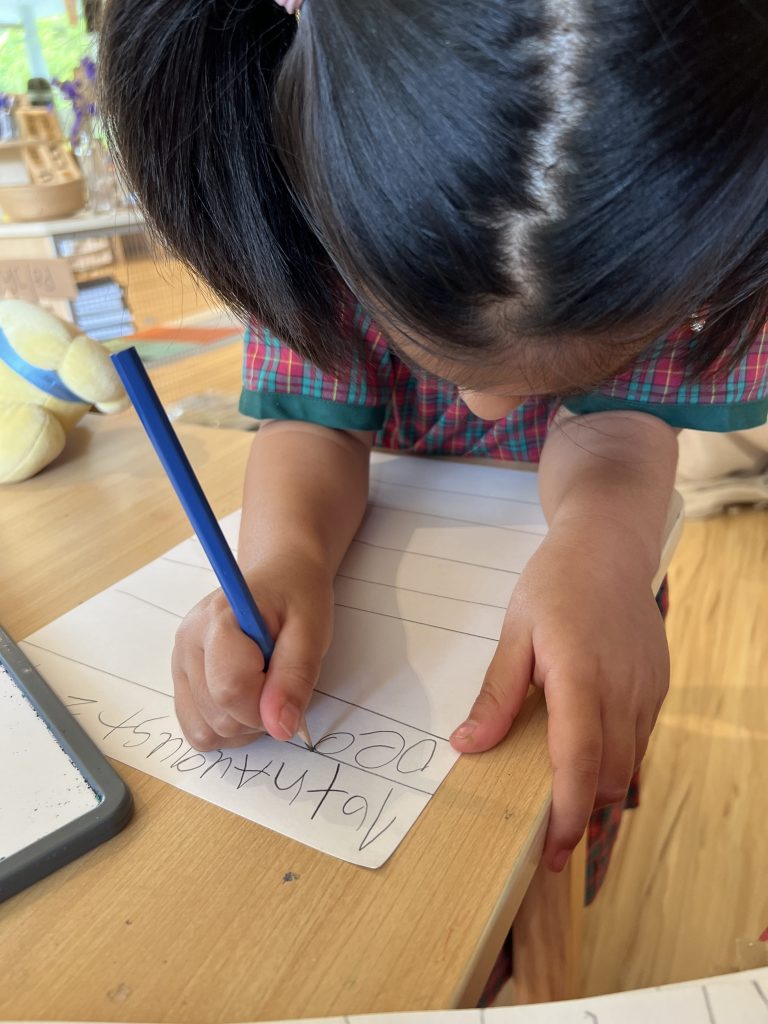
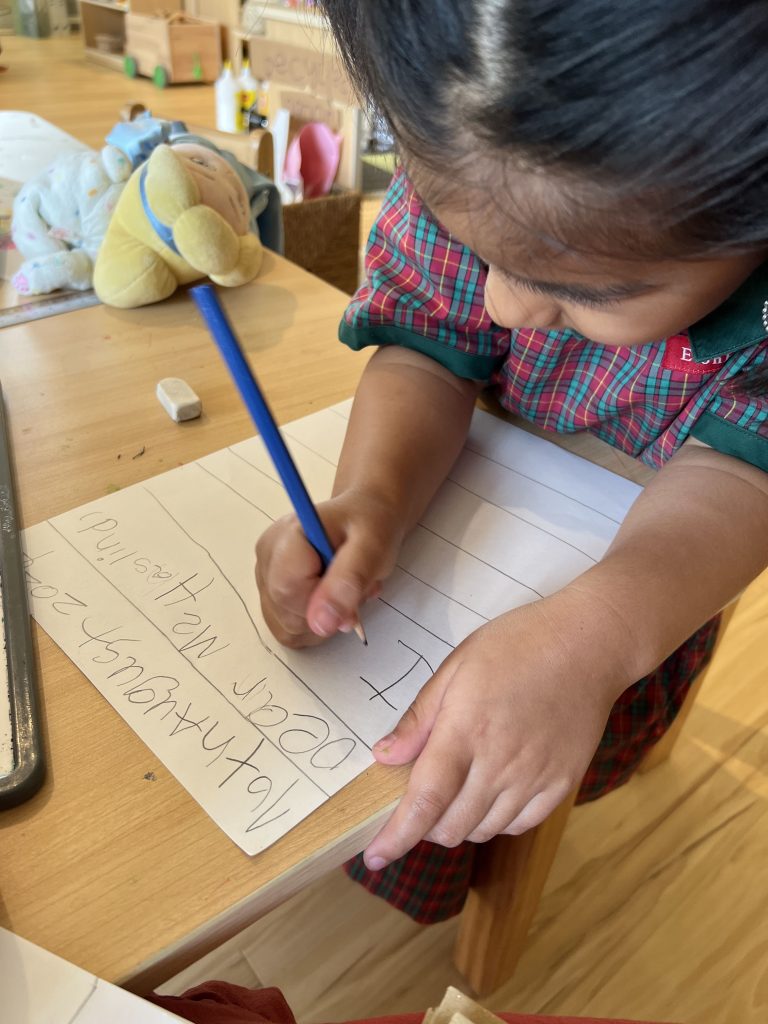
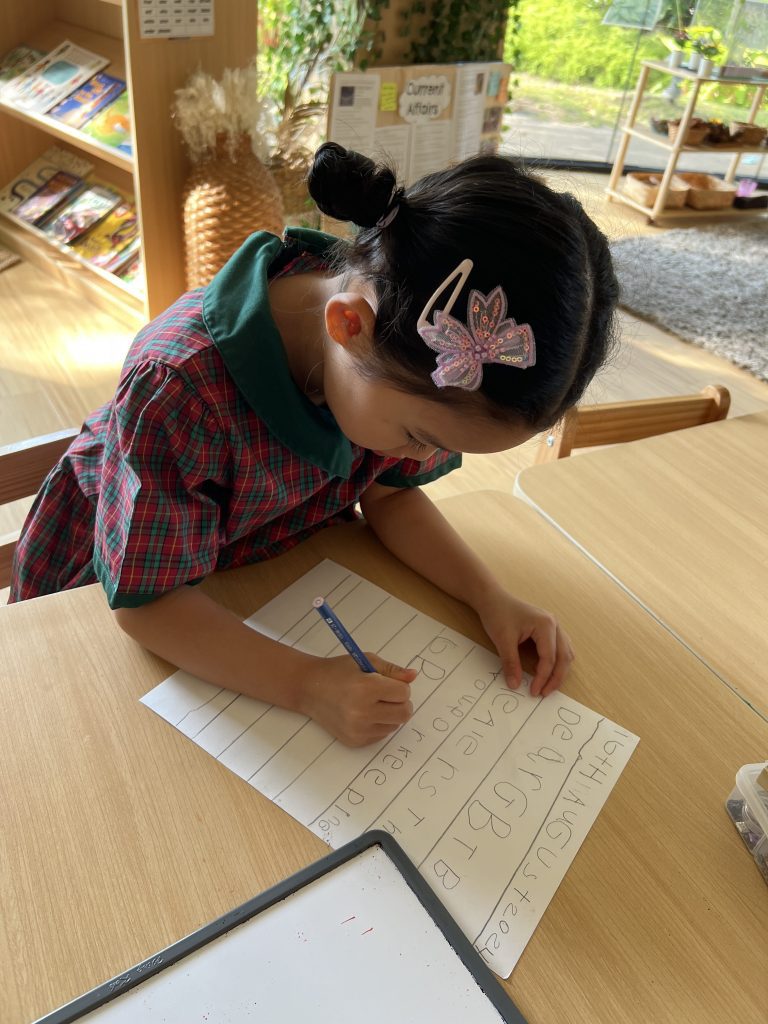
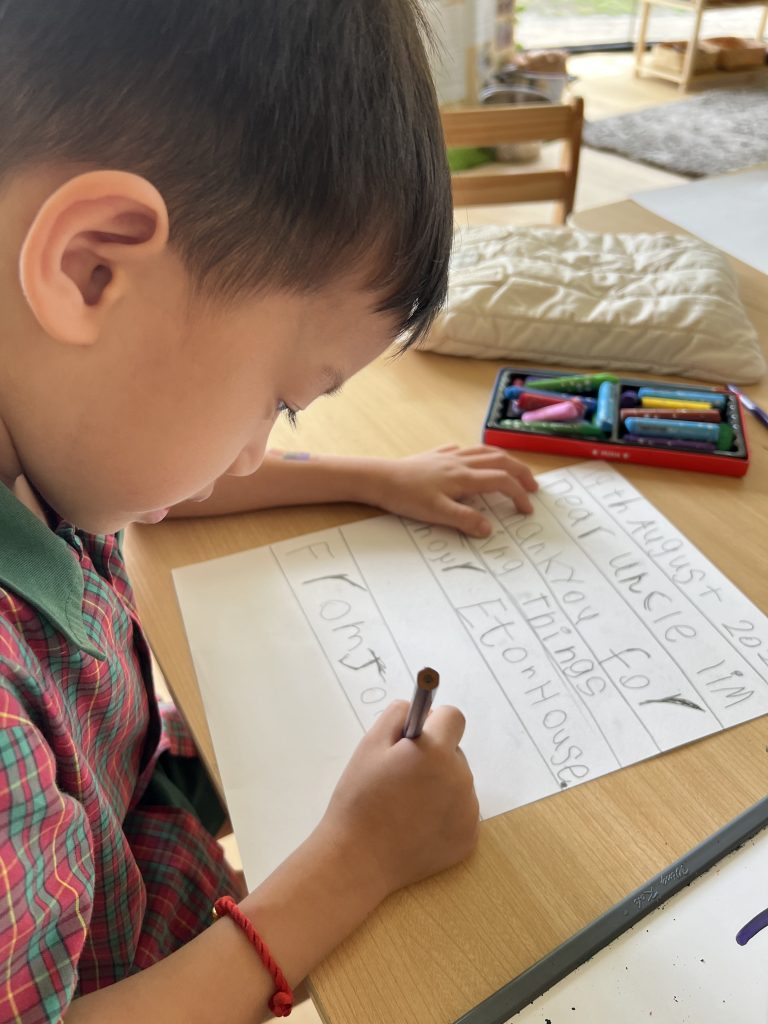
Week 7-8: Making appreciation letters and care package for our community
The children were thrilled to deliver their appreciation letters to the people they had written to, and seeing the smiles on their faces brought them great joy! We also had a discussion about what items should go into our care package, with the children thoughtfully considering what the workers at Gardens by the Bay might need. They said:
“We can buy a small towel for them so that when they are working under the hot sun and sweating, they can use the towel to wipe their face.”
“They also need some food so that they can eat when they are taking a break.”
“We can give food like bread and biscuits!”
“They also need water! Water is important and they need to drink more water.”
The children excitedly decorated their care package and placed the items inside the paper bag as we went around to deliver the care package.
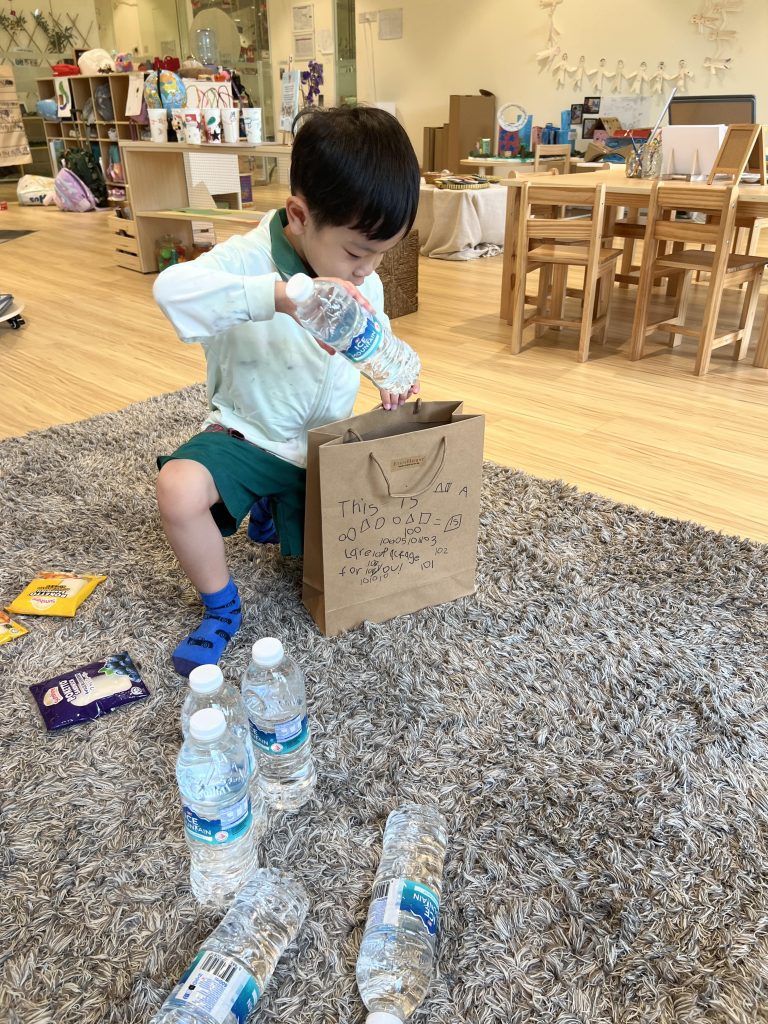
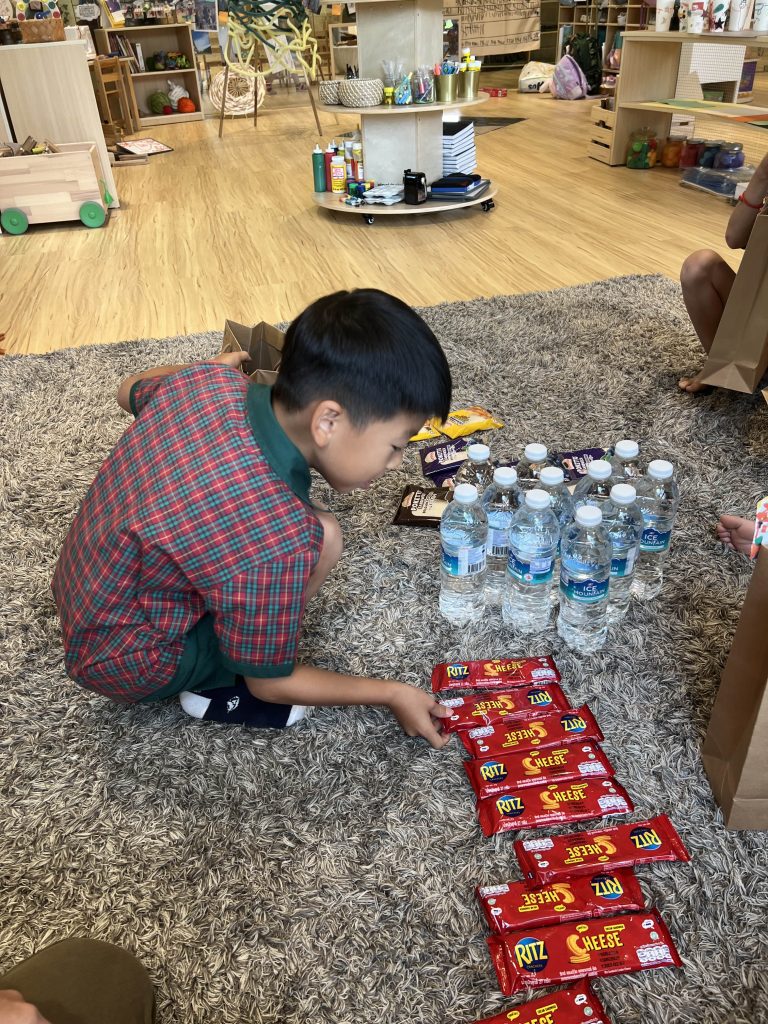
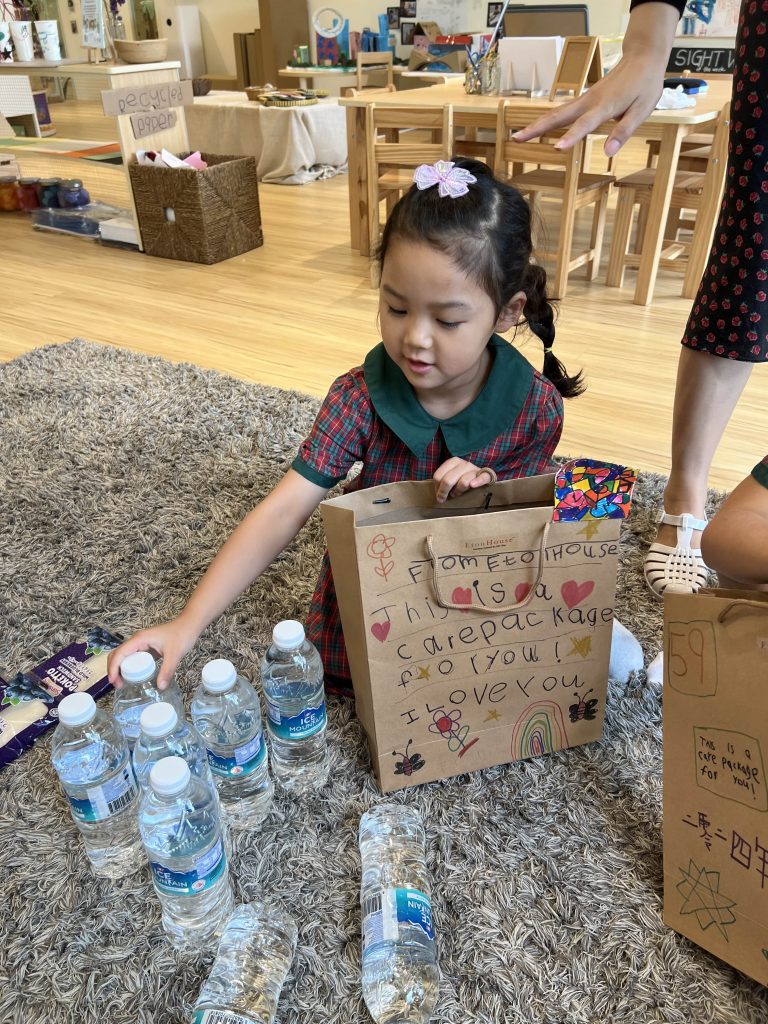
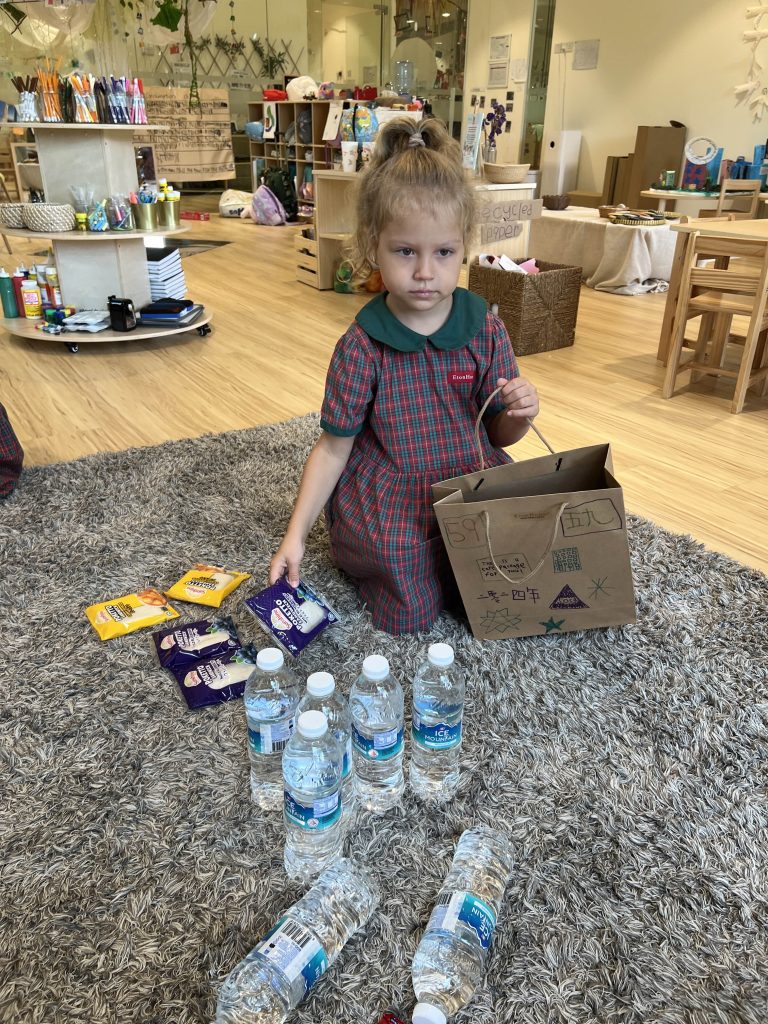
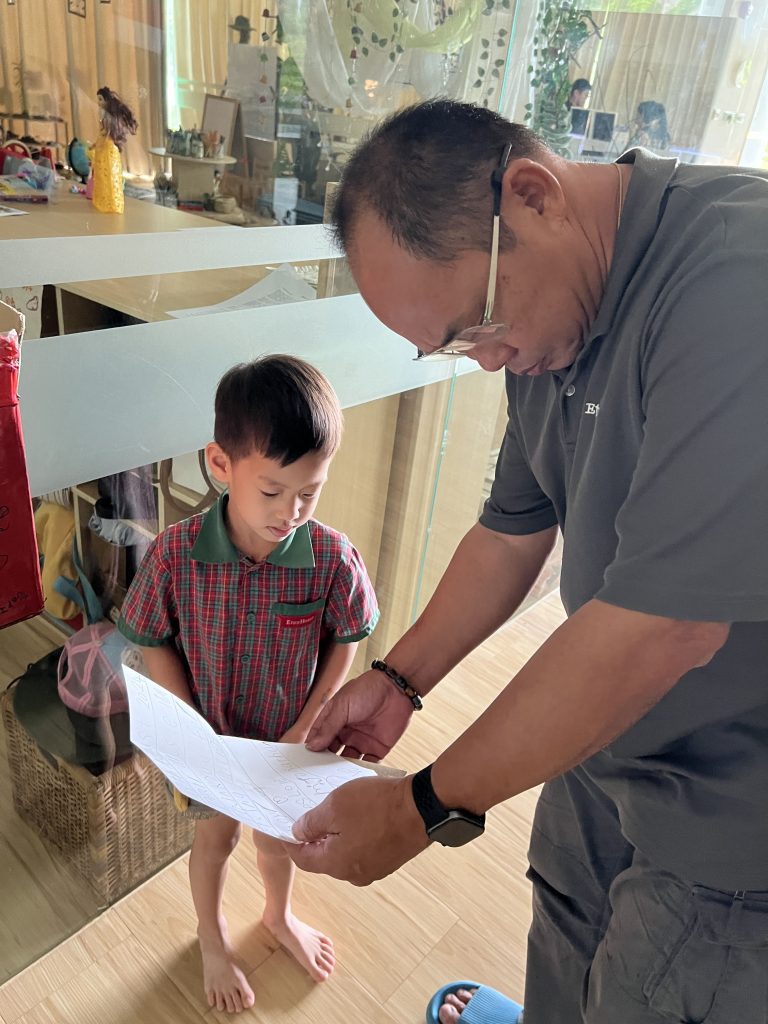
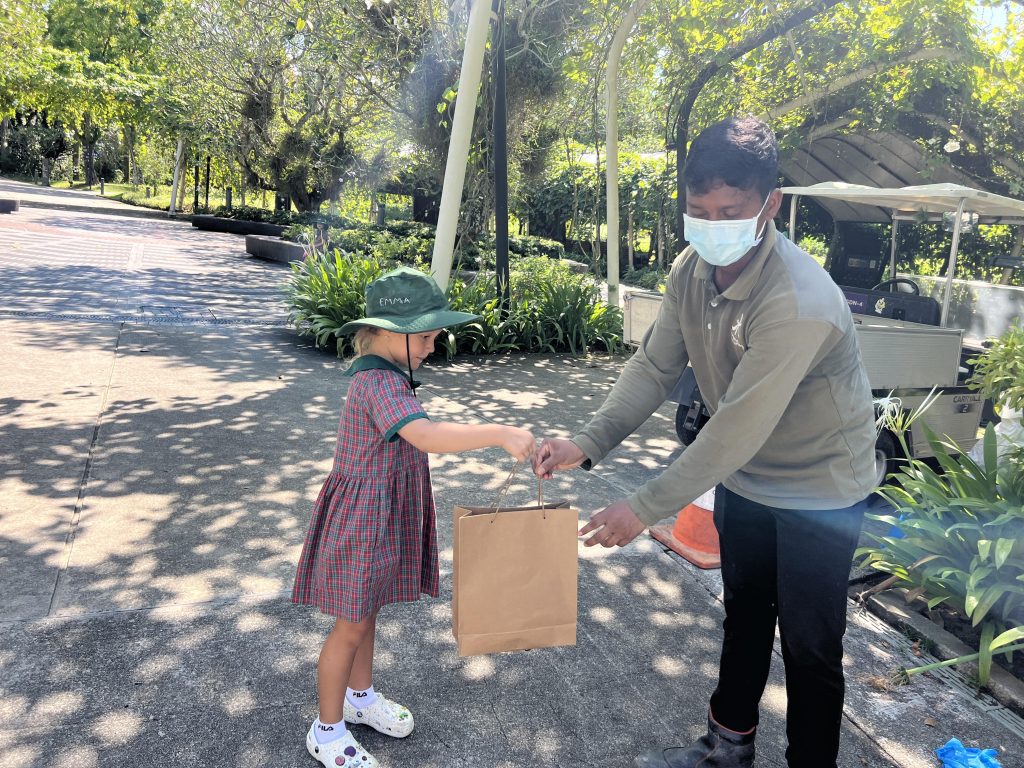
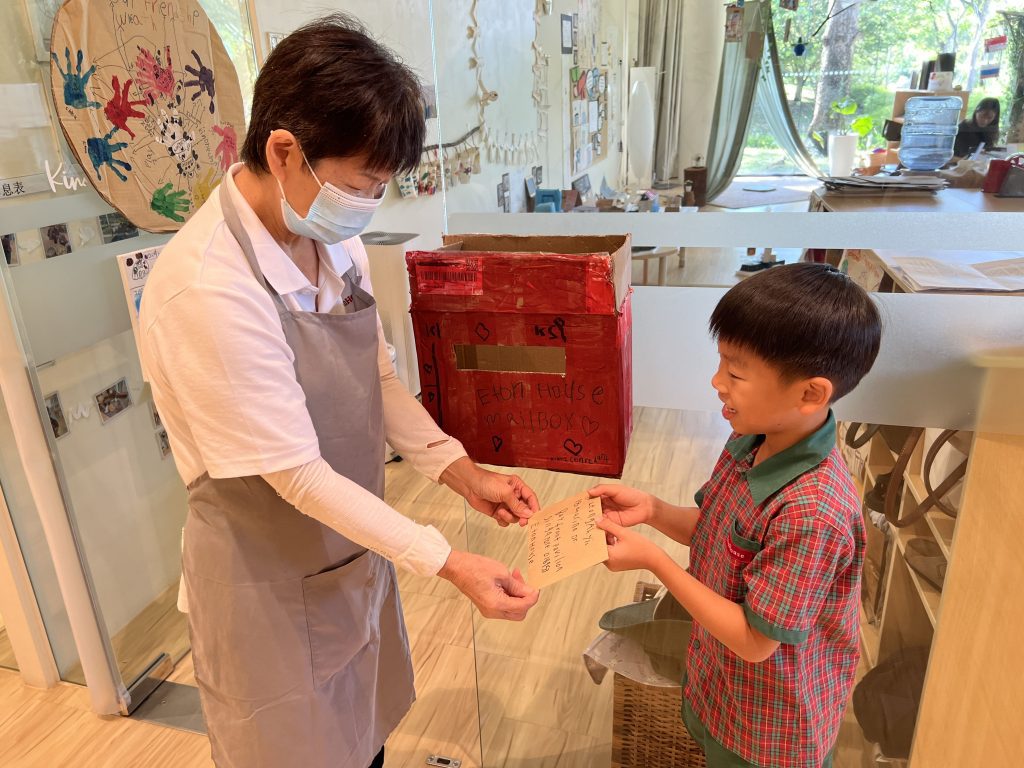
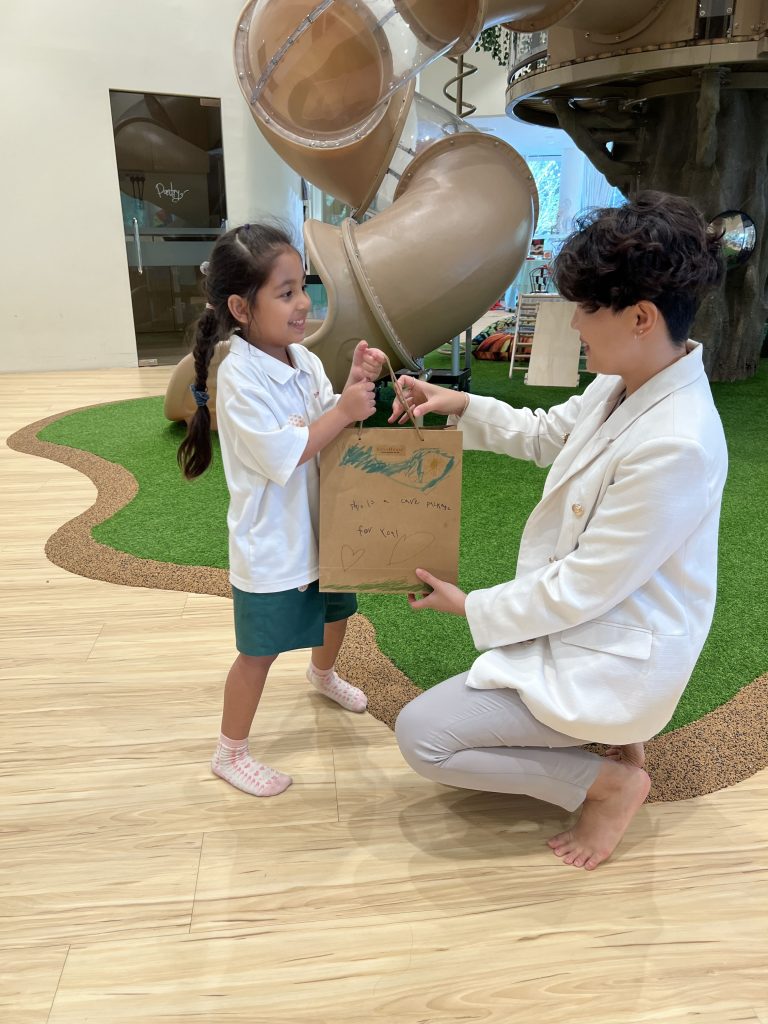
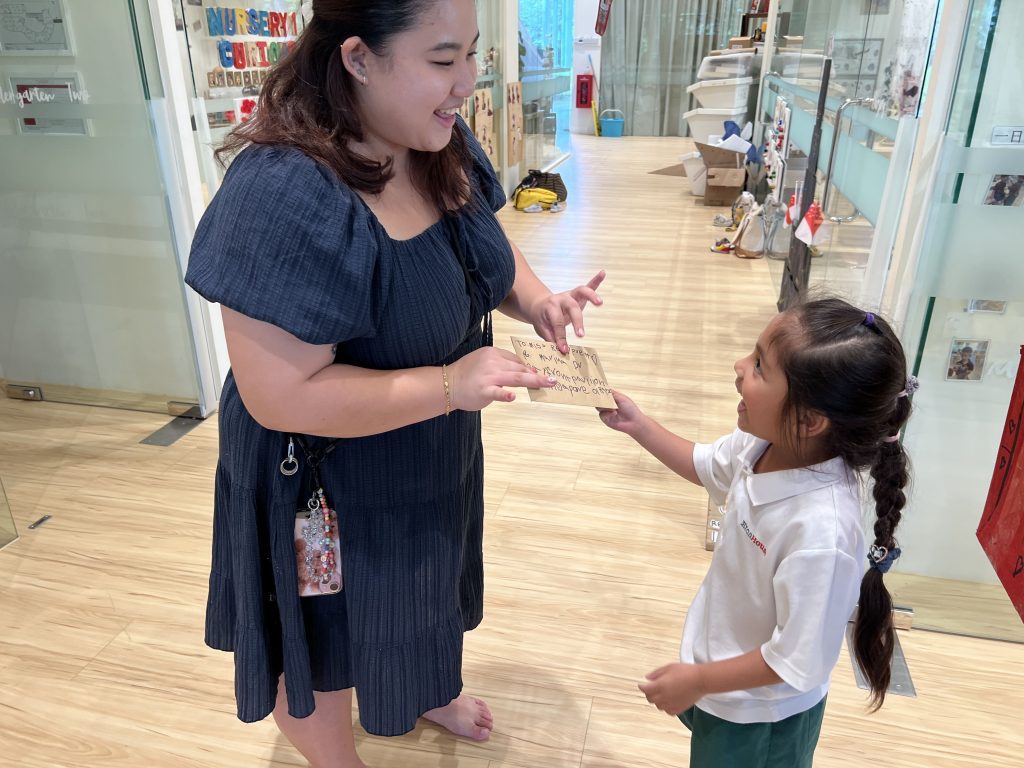
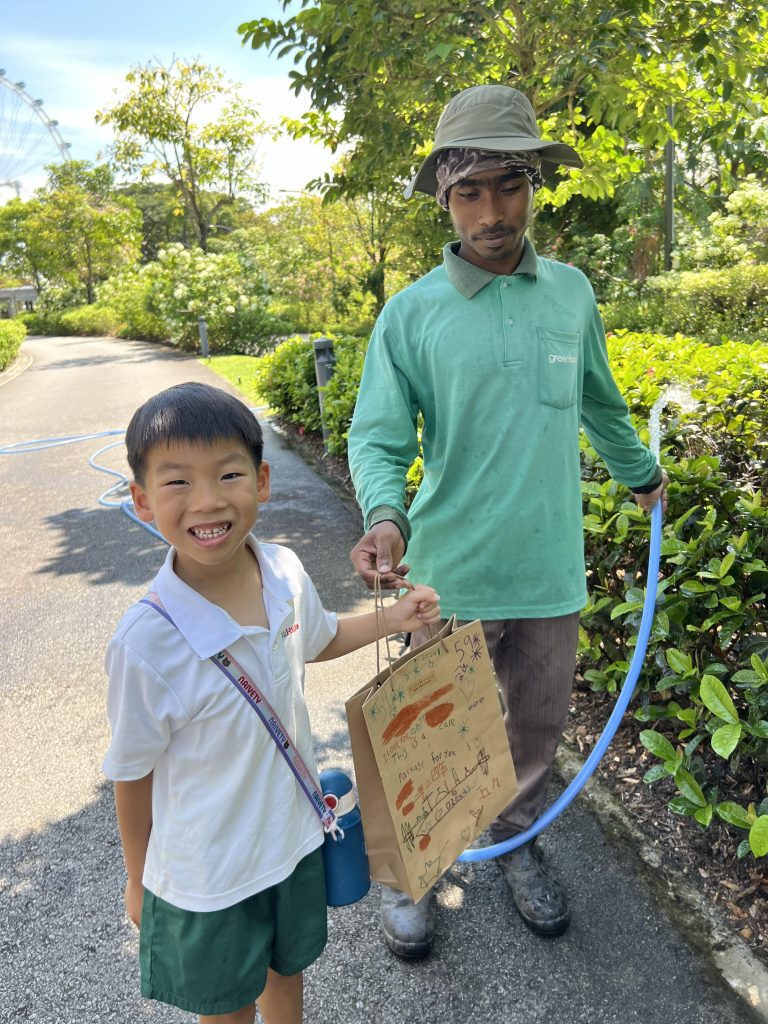
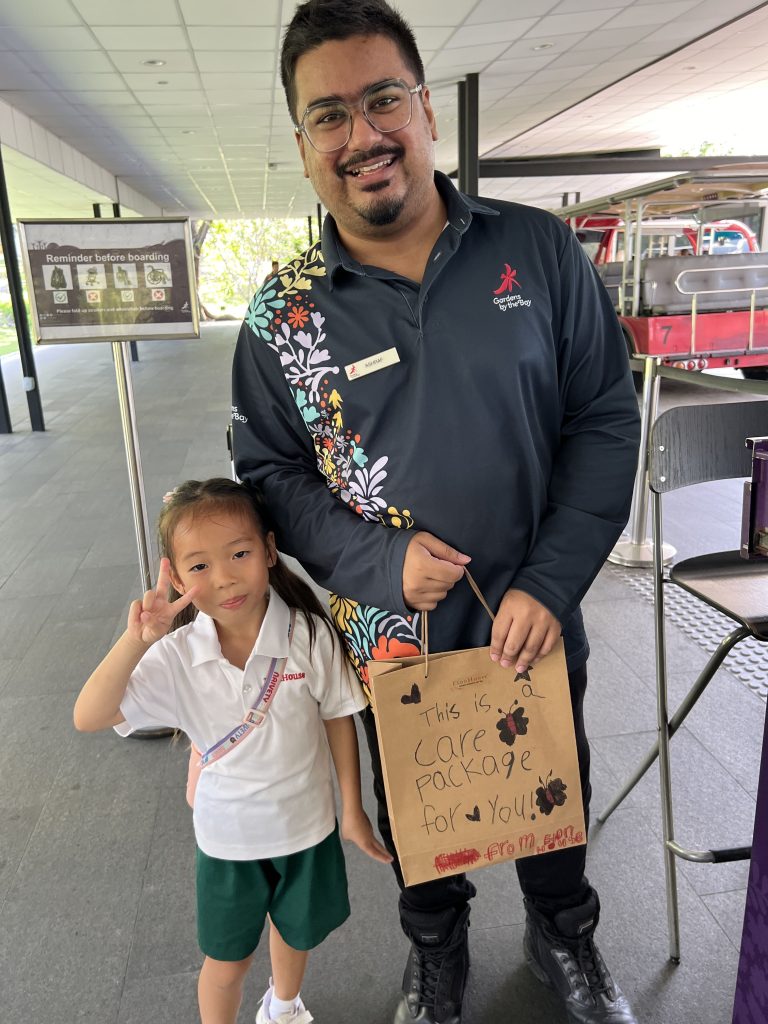
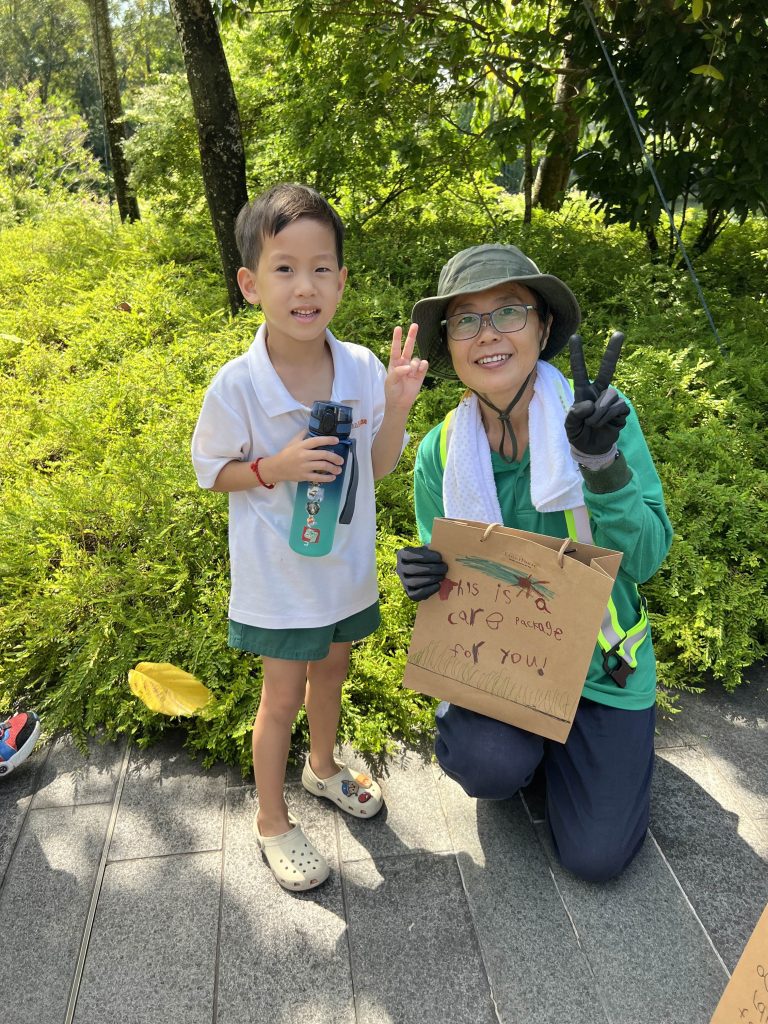
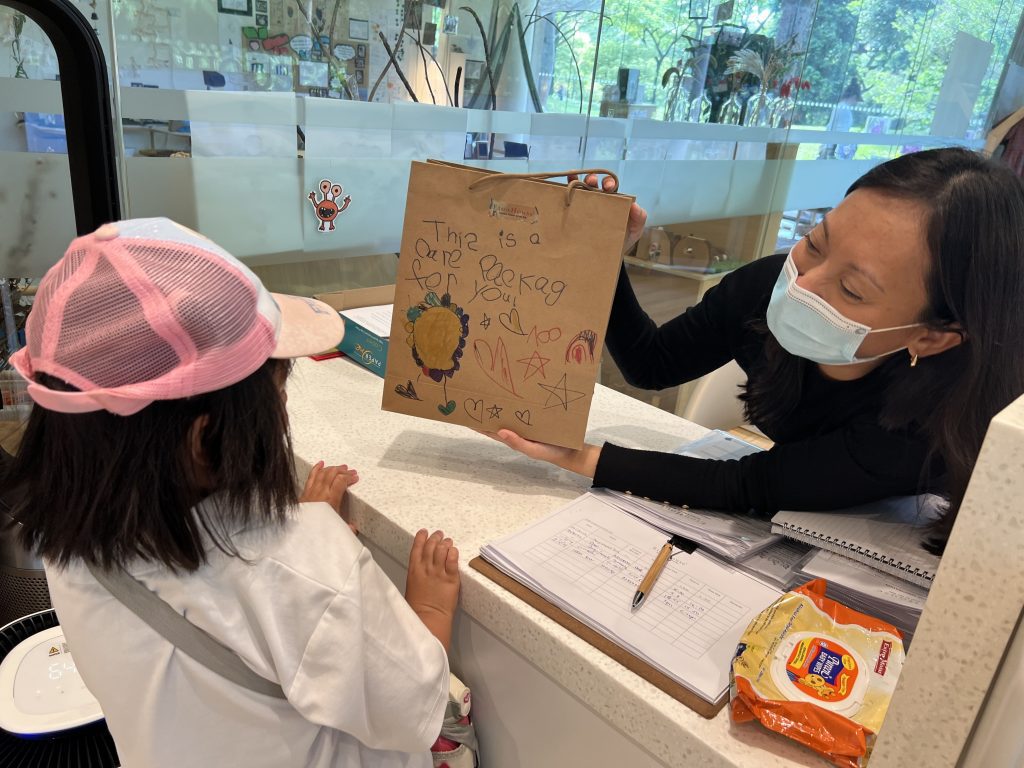
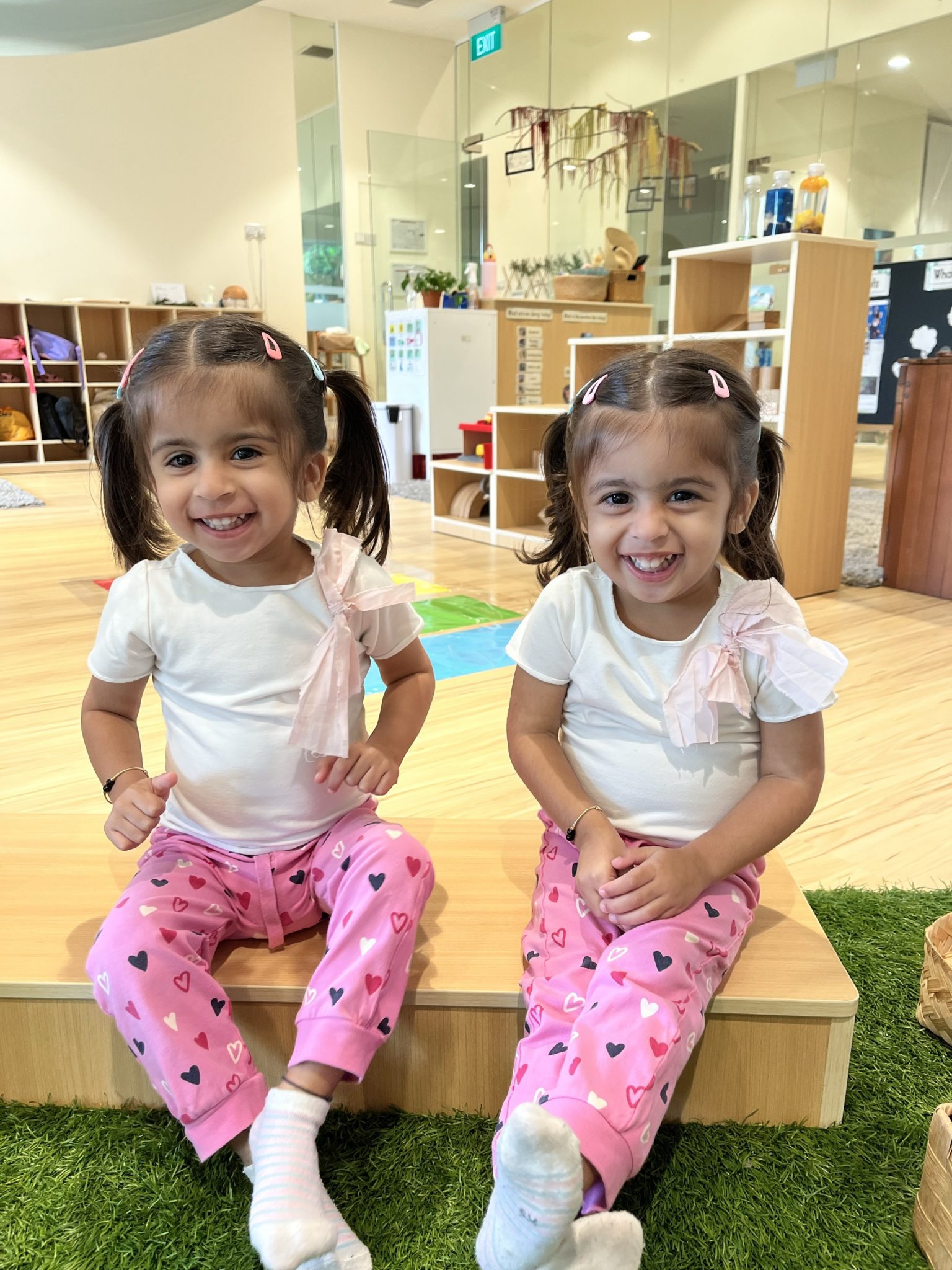

Priyanka & Ankesh, Parents of Kimaya and Miraya, Gardens
The school bears the immense responsibility of nurturing the seeds of character within these young minds, and it is evident that they do so with an all-embracing love and a spirit of genuine care. The manner in which educators treat the children, the quality of attention they give them, and the exemplary behaviour they model are all vital aspects of the requisite attitude towards their upbringing. Read more here

